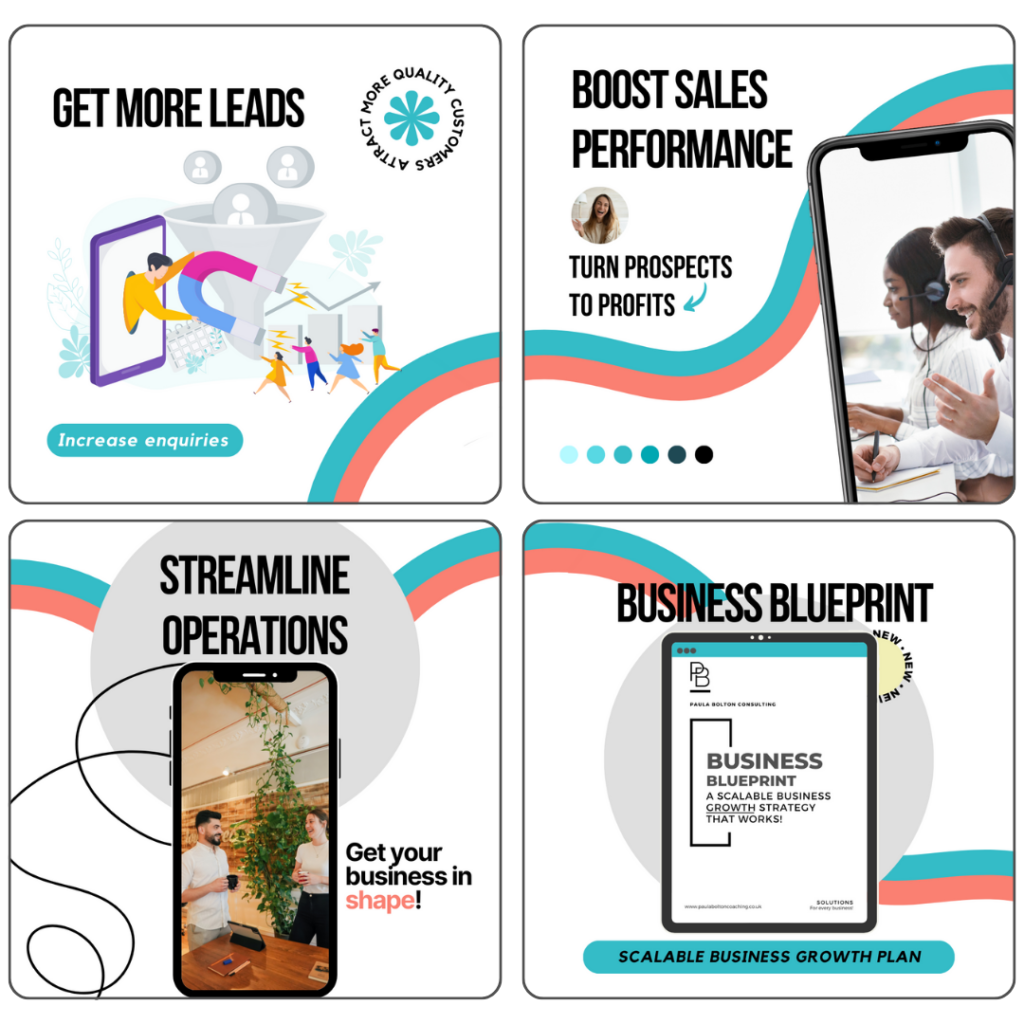Small Business Growth Strategies UK
Running a small business in the UK isn’t just about surviving – it’s about breaking through the barriers that keep most stuck in mediocrity.
Let’s start with some hard truths: approximately 10% of the UK’s population own a small business. That’s about 1 in 10 adults, given the UK’s adult population of roughly 53 million.
But here’s the kicker: only 5% of those businesses ever hit £1 million in annual sales.
Even more sobering? Only 1% make it to £10 million.
High failure rates
If you’re in sectors like retail, hospitality, or construction, the odds are even tougher!
Intense competition, sky-high operational costs, and economic sensitivity make these industries a minefield for failure.
On the flip side, technology, finance, and professional services tend to have lower failure rates. Why? They benefit from scalability, consistent demand, and higher barriers to entry.
The appetite for entrepreneurship is alive and well:
41% of Brits want to start their own business one day, according to a Forbes Advisor poll, though 26% are waiting for the right conditions before diving in.
To set the stage, let’s talk numbers. In 2023, the UK was home to 5.5 million SMEs, representing over 99% of the business population. Small businesses (with 0 to 49 employees) alone accounted for 5.6 million.
These SMEs drive our economy, contributing to three-fifths of employment and about half of the UK private sector’s turnover.
Now, here’s where it gets interesting: scaling isn’t easy.
It takes more than grit; it takes strategy.



If you want to be in the top 5%, or better yet, the top 1%, you need to know the game and play it differently.
That’s what this report is about – Small Business Growth Strategies that can push you beyond the plateau.
Let’s dive in…
1. The unavoidable enemy
Reality Check
Inflation, (the unavoidable enemy) isn’t going anywhere. It’s eating into profit margins, raising costs across the board, and hitting small businesses where it hurts the most , aka – your bottom line.
In 2023, inflation hit over 6.7%, and food prices spiked by more than 10% in the UK. (Source: ONS)
What can you do?
You can’t control inflation – but you can control how you react to it.
Don’t just increase prices like everyone else; get creative. Think dynamic pricing, bundling, and added value that makes customers feel like they’re getting more for their money.
Example: A local UK bakery started offering “subscription” bread services – delivering fresh bread weekly at a slight discount, locking in loyal customers for longer.
- Step 1: Review your supplier contracts and renegotiate where possible.
- Step 2: Bundle products to create value without overt price hikes.
- Step 3: Use dynamic pricing based on real-time demand and customer behaviour.
2. The Hidden Drain
Reality Check
Supply chain chaos is no longer news, but it’s still very real. 51% of UK businesses reported supply chain disruptions in 2023, with delays and cost increases threatening to cripple operations. (Source: FSB)
What you can do
Don’t get stuck waiting for parts, products, or packaging.
If you haven’t diversified your suppliers, you’re behind the curve.
Adaptability is your best weapon here. This is the year to think local, think flexible, and stay ahead of bottlenecks.
Example: BrewDog turned to local UK breweries for supplies when international shipments slowed. They kept production going and championed a “locally sourced” narrative, which their customers loved.
- Step 1: Build relationships with local suppliers.
- Step 2: Bulk up on inventory to weather delays.
- Step 3: Add a contingency fee in your pricing for unexpected costs.
3. Talent wars
Reality Check
Post-Brexit, the UK’s labour market is tight, and finding skilled workers feels like chasing shadows.
70%—yes, 70%—of businesses report hiring struggles. (Source: British Chambers of Commerce)
What can you do?
First, stop trying to compete with big corporations on salary – you won’t win that battle.
Instead, focus on a strategy that small businesses can win at ie: building a high-performance culture.
Here’s the play: take your time to hire right. The biggest mistake small businesses make is rushing through the hiring process because they’re desperate for help.
But here’s the thing, bad hires cost you more than you realise.
Instead of offering flexibility or remote work (which many companies are now walking back), build an environment that attracts high performers, and take the time to get the right people on board.
🤓 Study insight: Research shows that sitting with high-performing employees can significantly boost productivity.
A study by the National Bureau of Economic Research (NBER) found that employees who sat within 25 feet of a high performer experienced a 15% increase in their own performance.
On the other hand, sitting near low performers can have the opposite effect – dragging down productivity by up to 30%.
This “spillover effect” highlights just how crucial physical proximity to high achievers can be in fostering a more productive and efficient workplace. (Source: NBER Study | Next Gen Personal Finance | Kellogg Insight)
Actions:
Redefine your hiring process: Stop rushing through interviews. Implement a multi-stage process that includes not just skill assessments but also cultural fit. Consider trial projects or shadowing to gauge how candidates perform in your environment.
Set the standard for a high-performing environment: Create an internal culture where high performers thrive. This means setting expectations early – your workplace is for those who want to excel, not just coast. Build the idea that people who join your team want to be part of something special.
Upgrade your interview process: Interview not just for experience but for attitude. Ask about a candidate’s resilience, willingness to learn, and how they handle challenges. Interview high performers, not just “qualified” candidates

4. Adapt or die 💀
Reality check
Let’s talk tech. If you’re not leveraging AI in 2024, you’re leaving money on the table.
Automation isn’t a luxury for Fortune 500 companies anymore – AI tools are saving small businesses time and driving growth faster than ever before.
Let’s not sugar-coat this, the truth is, not every new tool is going to work for you.
The trick is to adopt tech that saves you time and money, not just tech for tech’s sake.
30% of UK small businesses are expected to adopt AI by 2025. (Source: PwC)
What can you do?
Don’t overcomplicate it. Start small. Automate mundane tasks like customer inquiries, email follow-ups, and social media scheduling.
Example: Huel, the UK’s meal replacement brand, uses AI to automate personalised email campaigns, ensuring customers are contacted at exactly the right time with the right offer.
- Step 1: Implement AI-powered chatbots for customer service (think Tidio or ManyChat).
- Step 2: Automate your email marketing using platforms like Mailchimp or HubSpot.
- Step 3: Use tools like, ChatGPT, Jasper or Grammarly to create content and save time.
5. The DTC Revolution
Reality Check
The Direct-to-Consumer (DTC) model is on fire in the UK. More businesses are skipping the middlemen and building direct relationships with their customers, allowing for more control over margins and branding.
E-commerce in the UK is expected to grow by 10% annually through 2024. (Source: Statista)
What You Can Do
It’s time to own your sales channels. If you’re still relying on Amazon or third-party retailers, you’re losing the chance to control your brand and your profits.
Example: Gymshark went DTC early on, building a loyal community online. By owning their e-commerce platform, they scaled to a £1 billion valuation without relying on external retailers.
- Step 1: Build your own e-commerce store using Shopify or WooCommerce.
- Step 2: Use Instagram and TikTok Shopping to drive direct sales.
- Step 3: Build a community around your brand through newsletters and exclusive offers.
The Small Business Growth Strategies for 2024? Own your customer relationships. Going DTC gives you the data, the control, and the margins.
6. The digital overwhelm
Reality Check
Digital marketing feels like a jungle, right? And if you’re a small business owner, it’s easy to get lost in the weeds.
It’s no surprise that 60% of small businesses in the UK find digital marketing overwhelming, while 42% say they’re not using social media effectively to drive sales. (Source: Statista)
What you can do
Here’s the thing: you don’t need to be everywhere, you just need to be where your customers are.
Start by ditching the idea that you need to dominate every platform.
Focus on one or two channels and nail them.
Example: Look at Leon, the healthy fast food chain. They didn’t try to be everywhere at once – they focused on Instagram to build a loyal community. Now, they’ve got a tribe of raving fans.

- Step 1: Choose two channels (say Instagram and LinkedIn) and commit to them.
- Step 2: Automate your social media. Tools like Buffer or Hootsuite will save you hours of manual posting.
- Step 3: Track performance. Use free tools like Google Analytics and social media insights to see what’s working.
7. Get busy
Running a Business in the UK isn’t for the faint-hearted.
But the challenges of inflation, supply chain bottlenecks, labour shortages, and tech adoption are your stepping stones, not roadblocks. The businesses that think small are the ones that sit still.
This is your time to move fast, pivot hard, and lean into the changes shaping the future.
Adopt our Small Business Growth Strategies that put you in control – whether it’s by diversifying your suppliers, using AI to scale, or building a direct-to-consumer channel.
Want some help?
Take our FREE Business Growth Assessment quiz and find out exactly where your business is stuck and where it can grow. Or book a 1-on-1 strategy session and build a plan that scales.









